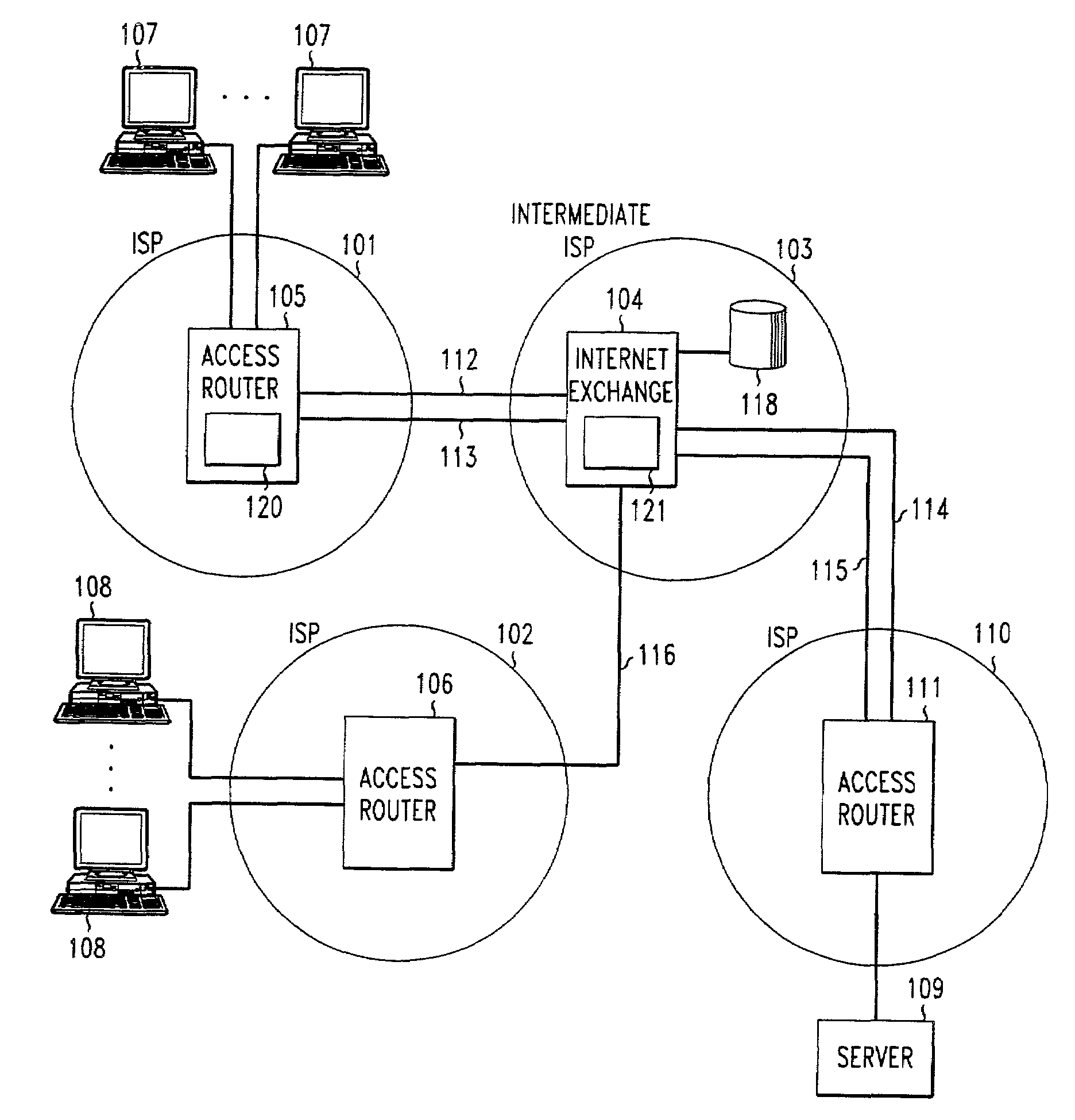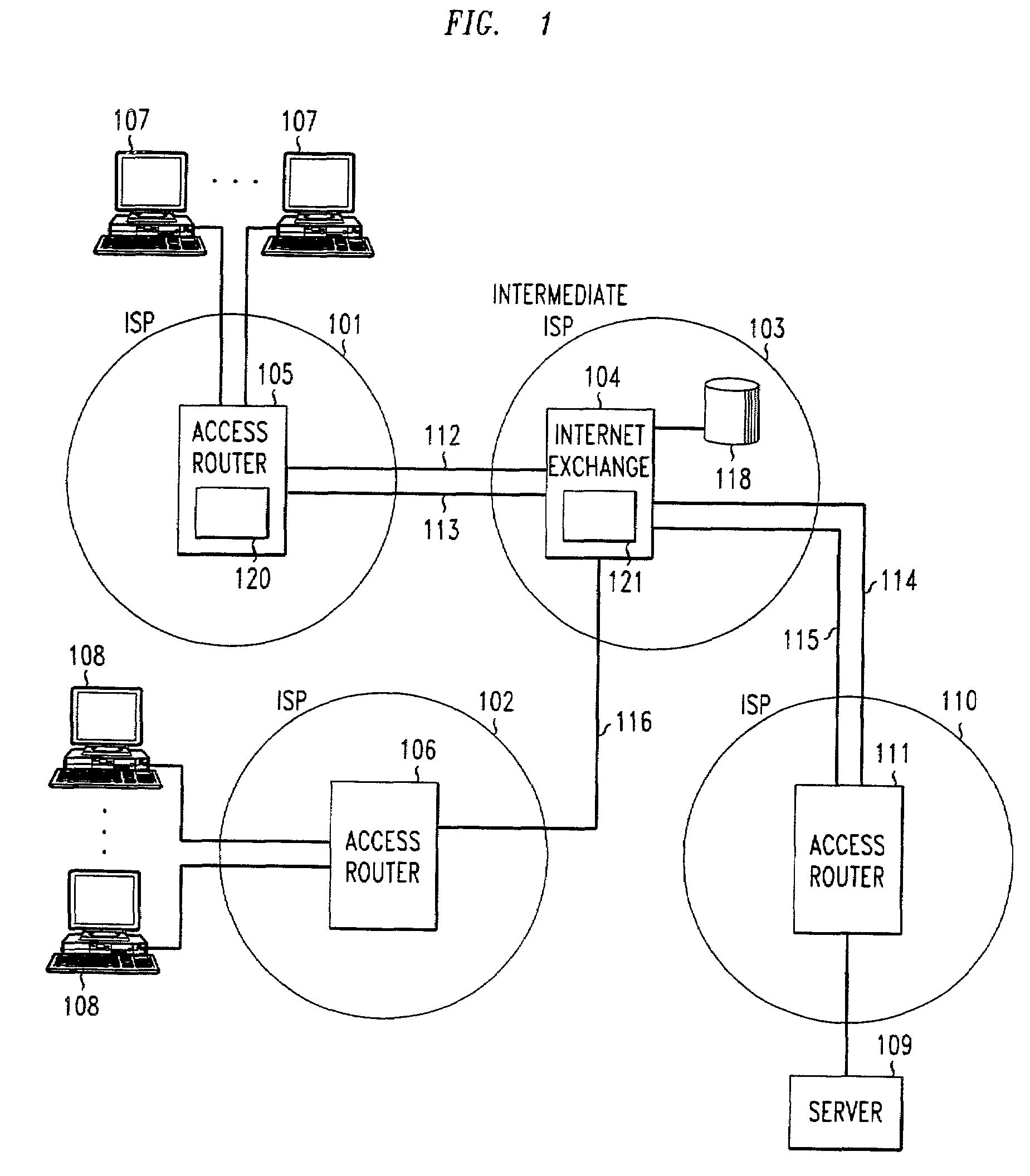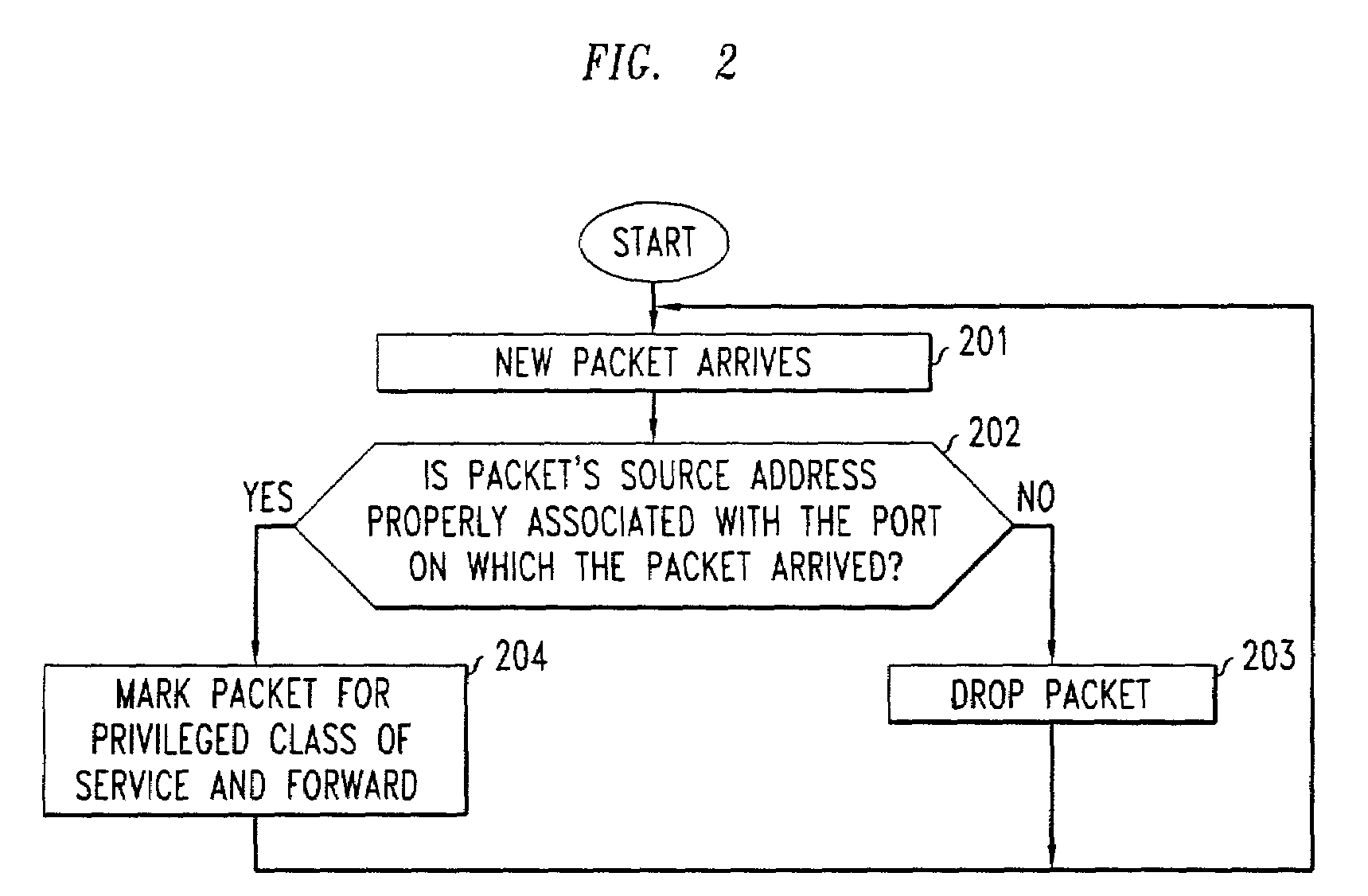Method and apparatus for incrementally deploying ingress filtering on the internet
a filtering and ingress technology, applied in the field of communication over the internet, can solve the problems of significant losses, site loss of advertising and sales revenues, and frustrated clients, advertisers, investors, etc., and achieve the effect of limiting the adverse effect of packets and time-consuming
- Summary
- Abstract
- Description
- Claims
- Application Information
AI Technical Summary
Benefits of technology
Problems solved by technology
Method used
Image
Examples
Embodiment Construction
[0019]With reference to FIG. 1, ISP 101, which supports ingress filtering, and ISP 102, which does not support ingress filtering, are connected to an intermediate ISP 103. Intermediate ISP 103 comprises an Internet exchange router 104 at which two or more ISPs exchange packets. ISP 101 includes one or more access or edge routers 105, and ISP 102 includes one or more access or edge routers 106. A plurality of clients 107 are connected to ISP 101 over a telecommunications network (not shown) such as a local POTS network or a DSL connection, a cable network using a cable modem, or any other network or methodology, wired or wireless, which provides Internet connectivity to the clients. Similarly, a plurality of clients 108 are connected to ISP 102 via a wired or wireless connection. A server 109 is connected to ISP 110, which is connected through an access or edge router 111 to intermediate ISP 103 and Internet exchange 104. By way of example, two classes of service, privileged and unpr...
PUM
 Login to View More
Login to View More Abstract
Description
Claims
Application Information
 Login to View More
Login to View More - R&D
- Intellectual Property
- Life Sciences
- Materials
- Tech Scout
- Unparalleled Data Quality
- Higher Quality Content
- 60% Fewer Hallucinations
Browse by: Latest US Patents, China's latest patents, Technical Efficacy Thesaurus, Application Domain, Technology Topic, Popular Technical Reports.
© 2025 PatSnap. All rights reserved.Legal|Privacy policy|Modern Slavery Act Transparency Statement|Sitemap|About US| Contact US: help@patsnap.com



